NYC’s Forgotten ‘War on Christmas Trees’
Discover how an obscure holiday crackdown affects festive street vendors today!


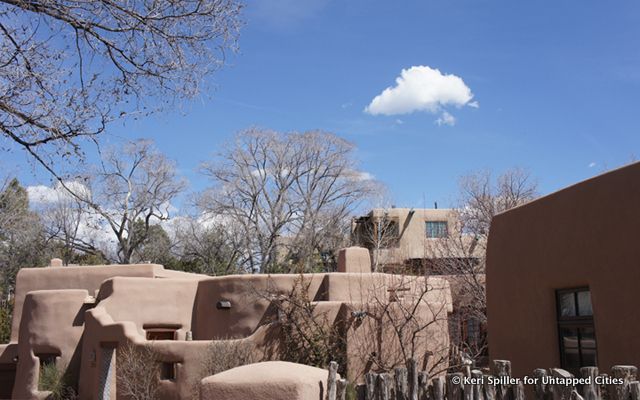
Santa Fe. It holds a lot of mystery and wonder for me, still after having become a resident. I spent the first several weeks here walking around in a dream, age was everywhere, a strong sun and undulating walls casting intense shadows. They creaked and flowed, those walls. Buildings like sculptures in contour with the land. It felt so foreign. If you want to feel like you’ve left the US without toting your passport, come to Santa Fe. The landscape, the sky, the culture, the art, the dirt. The architecture.
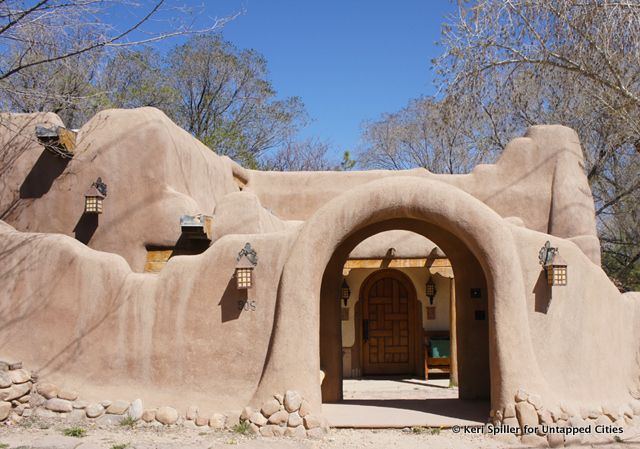
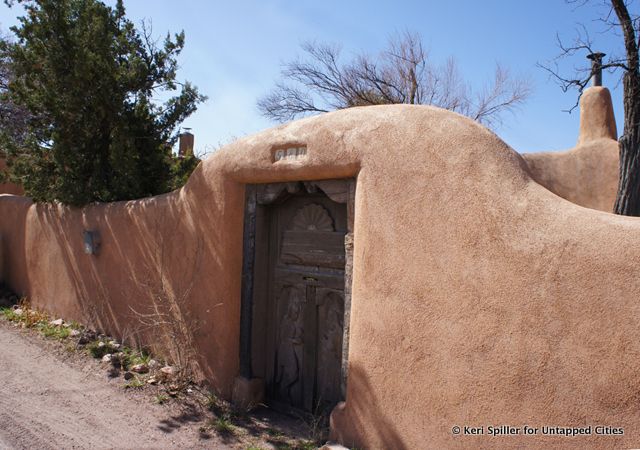
Santa Fe is considered the oldest capital city in North America, having celebrated its 400th anniversary in 2010. But it’s not the oldest American capital city. It was the Spaniards who founded Santa Fe as a provincial capital 400 years ago in 1610, after conquering the Pueblo Indians who had occupied the land for hundreds of years already. When Mexico gained independence from Spain in 1821, Santa Fe fell under Mexican rule until 1846, when the American Army staked its claim over all of New Mexico. The oldest capital city in North America, but not the oldest American capital city. It’s a distinction that reflects a more complex past than your average American town. Santa Fe is incredibly eclectic for a small town in the high desert. In its cultural, artistic and architectural heritage, it is as much Native American, Spanish and Mexican as it is American.
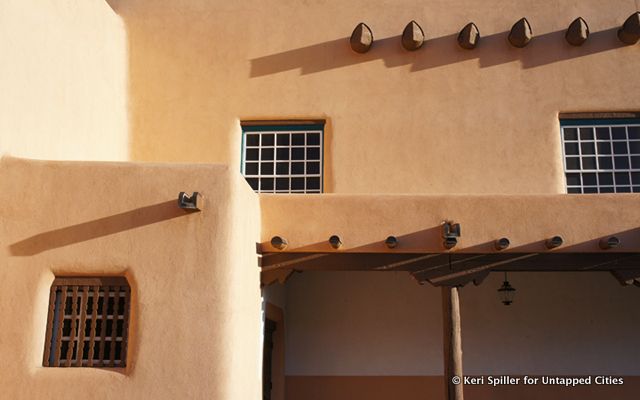
I’m compelled to explore any locale of interest through its evolution culturally, and my language of choice is architecture. Very fitting for a town adored by both visitors and locals, who delight at the old world feeling here, as if you’ve stepped back in time. It’s a place that seems like it could be somewhere else, the south of Spain or France, a small village in Mexico perhaps. All of those places, yet none of them. Santa Fe is quite its own place, and much of it has to do with its built environment.
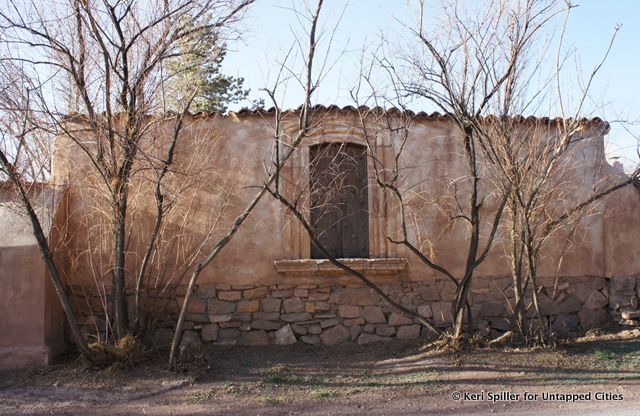
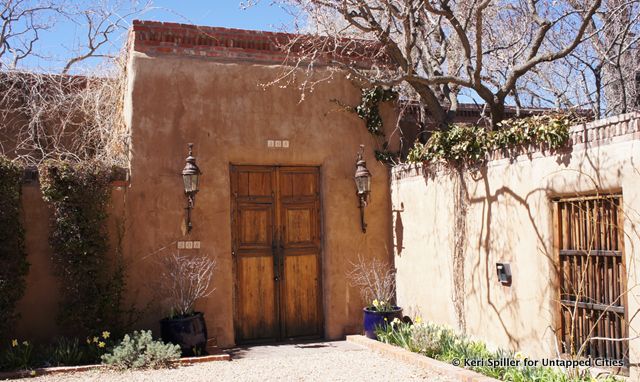
There are the more typical modern and contemporary neighborhoods, but I’m focusing on the Santa Fe of old and its legacy. By no means do I cover everything, but consider it a good start to understanding Santa Fe’s spirit in its construct. It draws folks to come and visit, or come and stay, for the layers of history oozing from the adobe walls, where nothing is square or straight, and it’s just perfect. With its complete lack of straight lines and square corners, Santa Fe is brimming with quirks and surprises. It’s part of what is both lovingly and mockingly referred to as “Santa Fe charm.” It started with the Pueblo Indians as far back as 900 CE, and amazingly there still exists a population of Pueblo Indians maintaining the indigenous way of life, Taos Pueblobeing the most well-known of these habitations. The term Pueblo Indian refers to a collection of Indian tribes found throughout the American Southwest. Their pueblos or towns share a distinctive character and form whether nestled in a valley, perched on top of a mesa or carved into a cliff.
The typical organization of a pueblo consisted of continuous adobe structures seeming to grow out of ”” or into ”” the ground, surrounding a large open communal space with other accessory structures shared by all. This sort of physical connection with the land was an extension of their spiritual beliefs, and also a reflection of how they lived. They considered themselves as part of the land, which connected to a larger cosmos. Theirs was a communal way of living with each other and their surroundings. Little emphasis was placed on personal privacy and ownership. Quite often the opening to a dwelling wouldn’t even have a door. Rooftops were considered public space, and many social activities took place there, with people moving from rooftop to rooftop as if it were an elevated plaza or park with multiple access points available to everyone. The pueblo was a place of meandering and terracing earth shared in a collective spirit. Design and decoration purely for the sake of visual aesthetics played very little part in the architecture of the Pueblo Indians. However there is a beauty in its austerity and straightforward functionality. Form really did follow function. Fundamentally modern, it could be argued, by its very nature. Adobe was the main building material, back then comprised of gathered stones set in a mixture of mud with ashes and hay. You know a building is old if the walls are furry; it’s the hay. Stacked and set by hand, one could only build a wall so fast, having to wait for a few layers to dry before building any higher. This method minimized the height of the walls and the span of roofs due to its self-supporting nature. Structures were usually only two or three stories high. A roof consisted of log supports termed vigas, topped with layers of the mud mixture. Viga ends stuck out of exterior walls creating a detail which would enter the official vocabulary of the Santa Fe design aesthetic. Vigas would also be emulated as an interior detail, as exposed beams, only round and knotted.These old adobe structures were built terraced, with the various levels accessible by ladders and built-in steps. This step design served a function but also carried natural and spiritual significance, a notion of ascendance, climbing closer and closer to their gods. It is another element that has carried through to modern design of large multi-story buildings, homes, in wall details and simply in the use of an old ladder as a decorative accent.
The Pueblo Indians’ building methods and their connections to the spiritual and natural world yielded structures characteristically basic, and organic in form and function. The simplicity of these structures would be elaborated upon in time, but their sculptural nature and minimal details created the basis of what would become the hallmark of building design throughout the Southwest.
Spanish explorers and missionaries first arrived in Northern New Mexico in 1598, and by 1610 the new settlement of Santa Fe was formed and declared the capital of this northernmost province of New Spain. Formally it’s the Villa Real de Santa Fe de San Francisco de Asîs or The Royal Town of the Holy Faith of St. Francis of Assisi. As the patron saint of Santa Fe, St. Francis can be found all over town in paintings, murals, carvings and tourist trinkets. There are two in the front yard, and I’m not even Catholic.
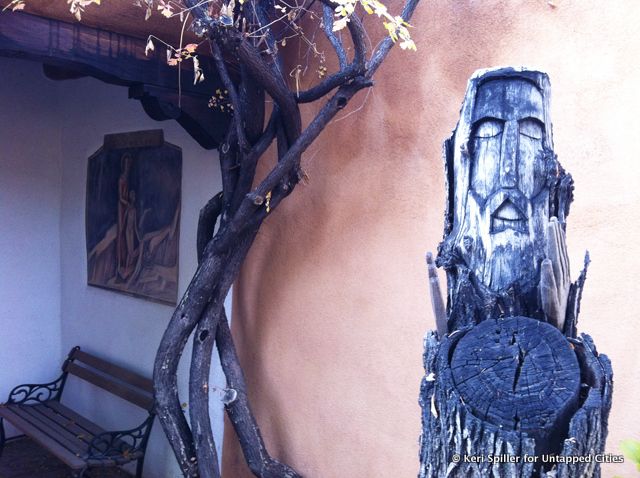
Stay tuned for the second segment on Santa Fe’s architectural history… All black and white photographs are courtesy of the New Mexico History Museum Photo Archives. Follow Untapped Cities on Twitter and Facebook! Get in touch with the author @kerispiller.
Subscribe to our newsletter